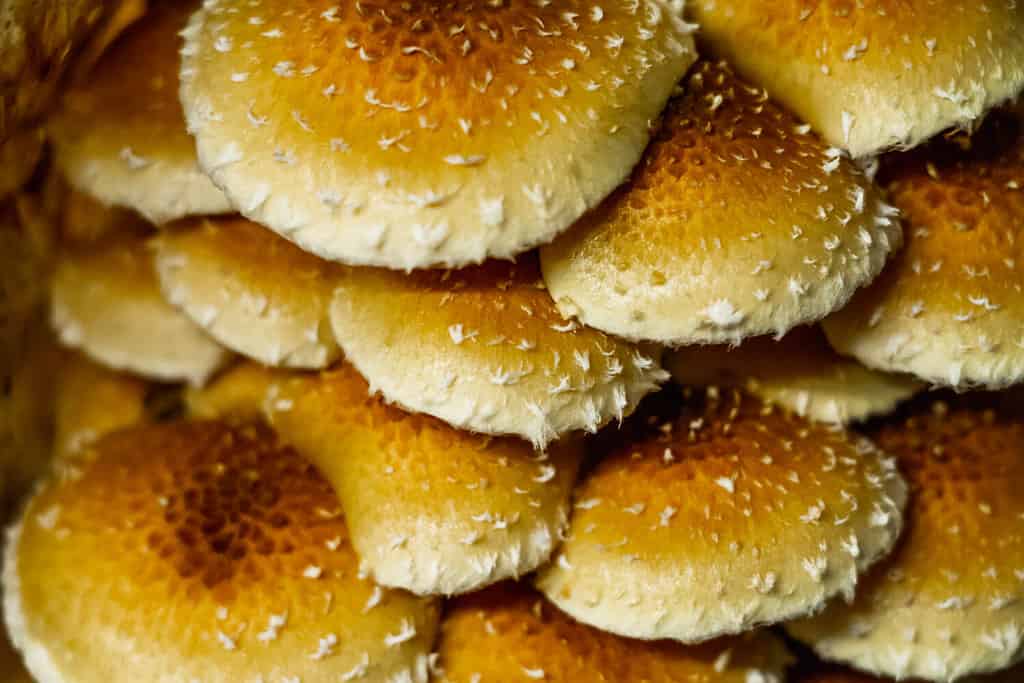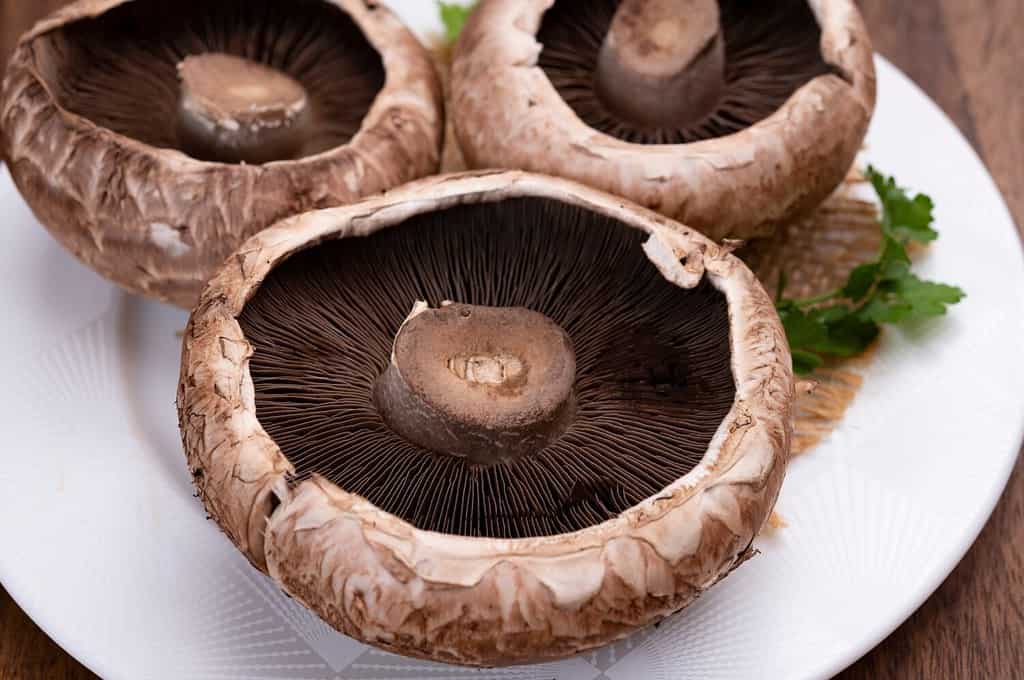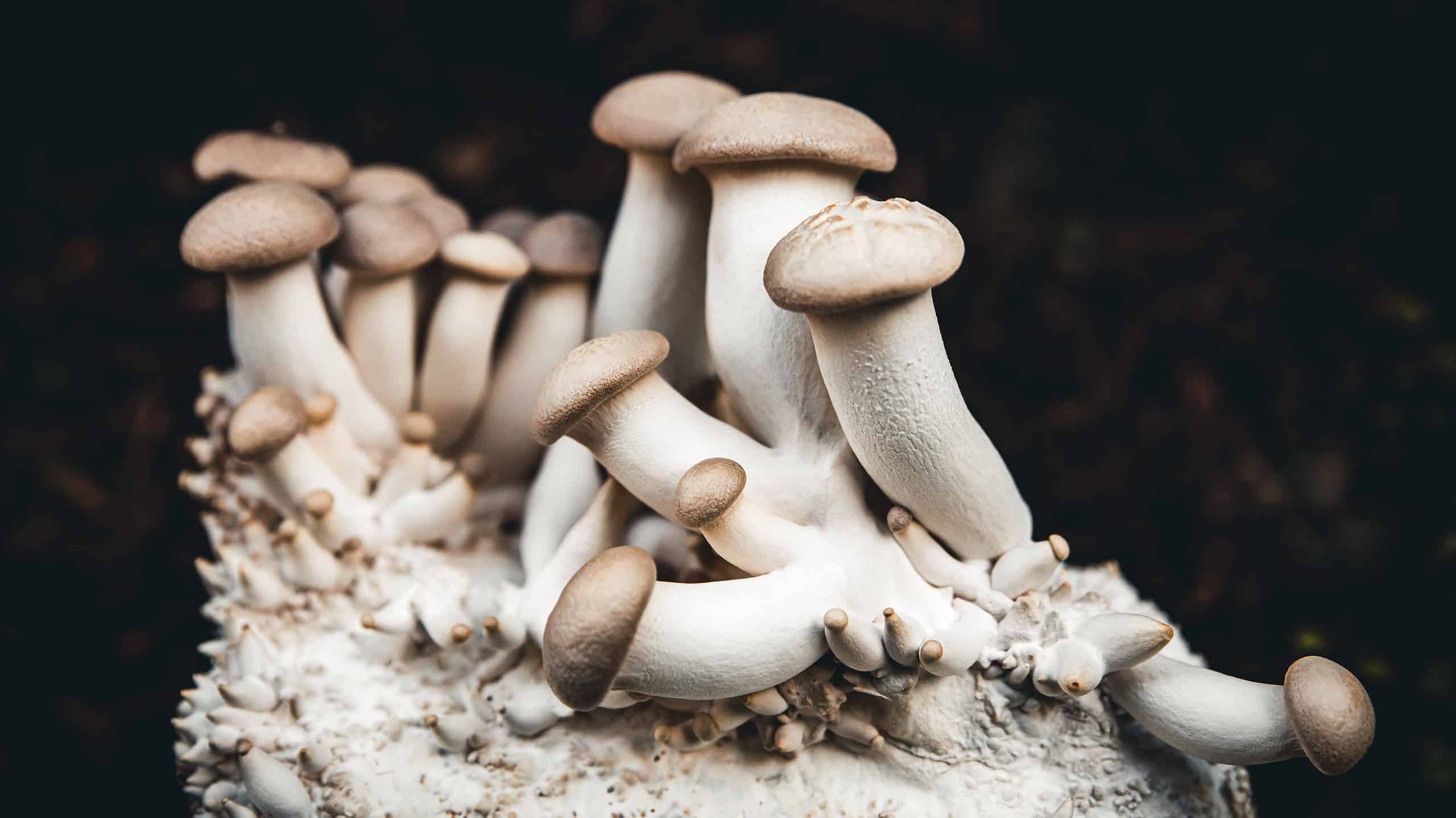Have you ever eaten a mushroom that tasted meaty? There might be a reason for that. In recent years, experts have discovered that mushrooms share more DNA with humans than plants. That’s right: fungi are actually closely related to animals and share distinct characteristics with humans — more so than they do with plants. And while a mushroom’s DNA might not actually influence its flavor (this is more likely from the increased glutamate in the mushroom), it’s still interesting to consider the many similarities between humans, animals, and fungi.
There are countless types of fungi, and only a portion (around 120,000 species of fungi) have been described so far. Keep reading to learn more about how mushrooms share DNA with humans.
How Closely Related Are Humans and Mushrooms?
Humans share around 50% of their DNA with fungi, meaning they have a common ancestor with animals. In other words, they are more similar to humans and animals than they are to plants.

There are over 6 million species of fungi, most of which have not yet been described.
©Andy Holbeck/Shutterstock.com
Mushrooms used to be considered plants, but they now fall under their own kingdom Fungi. Research indicates that “animals and fungi are sister groups while plants constitute an independent evolutionary lineage.” So, while you might assume mushrooms have more in common with the lettuce in your salad than they do with you, the opposite is actually true.
What Characteristics Do Mushrooms Share With Humans?
Fungi share a variety of characteristics with humans, from how they store their energy to what makes up their thick cell walls. For example, both humans and mushrooms store carbohydrates for energy, while plants store starch. Moreover, when exposed to sunlight, mushrooms produce vitamin D the same way we do.
Through research, experts drew the following conclusion regarding fungi’s similarities to humans:
“Like animals, fungi are heterotrophs; they use complex organic compounds as a source of carbon, rather than fix carbon dioxide from the atmosphere as plants do. In addition, fungi do not fix nitrogen from the atmosphere. Like animals, they must obtain it from their diet … As with animal cells, the polysaccharide of storage is glycogen, rather than starch, as found in plants.”
Furthermore, both fungi’s and insects’ cell walls are made up of polysaccharide chitin, while plants’ cell walls are made of cellulose. Fungi also absorb oxygen and produce carbon dioxide (like humans) while plants do the opposite. In addition to shared DNA and functions, humans and fungi can even contract the same viruses.
Benefits of Mushrooms
By now, you know that humans share around 50% of their DNA with mushrooms. But what does that really mean for us?

Mushroom have many health benefits and often even give off a “meaty” flavor.
©barmalini/Shutterstock.com
Well, for one, fungi have developed immunities against some viruses that affect humans and animals. In other words, they can potentially be used to strengthen our defenses against them. For example, the honeybee population is facing endangerment due to viruses carried by mites. Since we rely on these bees to pollinate our food, we might be able to extract from fungi and strengthen the bees’ immunity against these viruses, which can be a game-changer in many ways.
What’s more, many experts believe mushrooms (specifically Psilocybin) can be used as a form of medicine and treatment for mental health conditions like anxiety, obsessive-compulsive disorder (OCD), post-traumatic stress disorder (PTSD), depression, and more.
Additionally, mushrooms play an important role in the ecosystem, breaking down organic matter and restoring nutrients in soil. Eating mushrooms (safe, edible mushrooms you can cook with!) can also decrease your risk of cancer, lower your sodium intake, lower cholesterol, protect brain health, provide a natural source of vitamin D, improve your gut health, and strengthen your immune system. In fact, many medicinal mushrooms have been used in important pharmaceuticals for ages.
Will Mushrooms Take Over the World?
The answer to this question is probably not, but fungi are quite powerful organisms. Though conspiracy theorists toss around the idea of a fungi-driven zombie apocalypse that involves mushrooms taking over a person’s brain, the largest threat fungi pose is treatment-resistant fungal pathogens. Fungi like Cordyceps, or Ophiocordyceps unilateralis, can live as parasites in the brains of various animals and insects. However, because most fungi do not easily spread from human to human, a fungal pandemic is highly unlikely.
Nevertheless, climate change is linked to increasing fungal threats. Fungal infections in humans can be dangerous and even life-threatening at times, especially in immunocompromised individuals. If treatment-resistant fungi find their way to vulnerable hosts, they could wreak havoc on the individual’s system.
The information presented on or through the Website is made available solely for general informational purposes. We do not warrant the accuracy, completeness, or usefulness of this information. Any reliance you place on such information is strictly at your own risk. We disclaim all liability and responsibility arising from any reliance placed on such materials by you or any other visitor to the Website, or by anyone who may be informed of any of its contents. None of the statements or claims on the Website should be taken as medical advice, health advice, or as confirmation that a plant, fungus, or other item is safe for consumption or will provide any health benefits. Anyone considering the health benefits of particular plant, fungus, or other item should first consult with a doctor or other medical professional. The statements made within this Website have not been evaluated by the Food and Drug Administration. These statements are not intended to diagnose, treat, cure or prevent any disease.
Thank you for reading! Have some feedback for us? Contact the AZ Animals editorial team.








